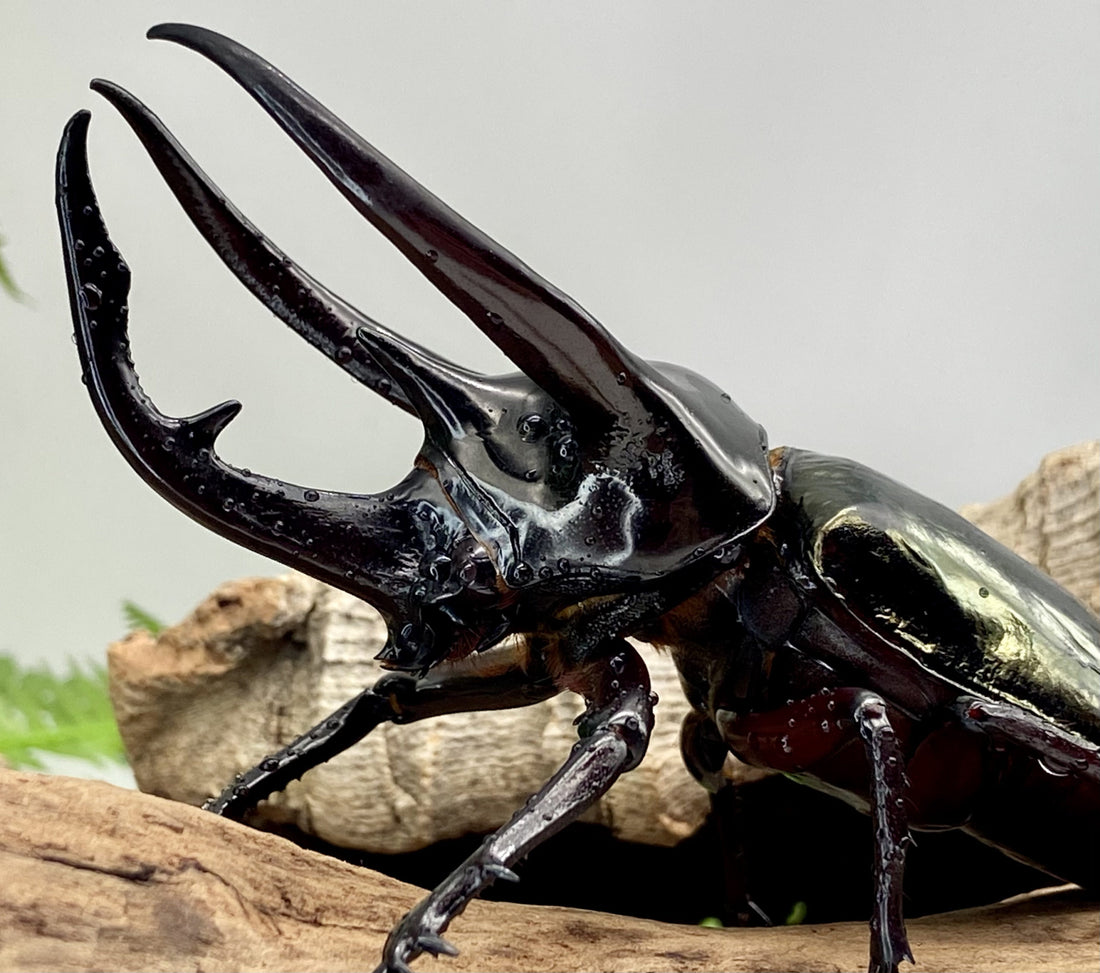
Chalcosoma chiron caresheet
Share
Adults:
- Size: 45-130mm
- Adult life span once active: 3-5 months
- Temperature: 68-77°F
- Humidity: 60-70%
- Food: Beetle jelly or fruits(no citrus)
Breeding:
- Required temperature for breeding: 72-80°F
- Minimum container size for egg laying: 12 in x 4 in x 8 in. Bigger containers are always the better option for breeding!
- # of eggs laid on average: 30-80 eggs.
- Flake soil humidity adjustment: The amount of water is appropriate when you can form a ball by squeezing the flake soil with your hand. Water seeping out of your hands during the process indicates that there is too much water.
- Set-up: Pack the bottom 5cm of the container tightly and fill up the remaining space loosely with flake soil. Place objects such as sticks or barks at the top so that the beetle can flip itself over if needed. Lastly, don't forget to regularly change fruits or beetle jelly for the beetle to feed!
Set-up example:

Larvae:
- Food: Flake soil or white-rot hardwood.
- Temperature: 72-77°F.
- Humidity: 60%
- Larval duration: 12-18 months
- Container size recommendations:
- L1: 4oz deli cup
- L2: 16oz deli cup
- Early L3: 32oz deli cup
- Female L3: 32oz deli cup or 2L container.
- Male L3: 4L container minimum.
- Pupation: This species has a problem of losing weight towards the end of L3 stage, which could lead to minor males. In order to prevent this issue, it is recommended to put some clay or other inorganic material at the bottom of the container once the larvae start turning yellow in color.
Helpful notes:
- Female larvae tend to pupate faster than males, so it is ideal to keep the males warmer than the females so they both can emerge around the same time.
- As mentioned above, a lot of people tend to produce minor males with this species because of the weight loss towards the end of L3. The theory is that because this species originate from the volcanic regions of Indonesia, there are many inorganic materials present in the soil. With just the flake soil in their container, the larvae will keep searching for a place with inorganic materials such as clay to build their pupal chamber.